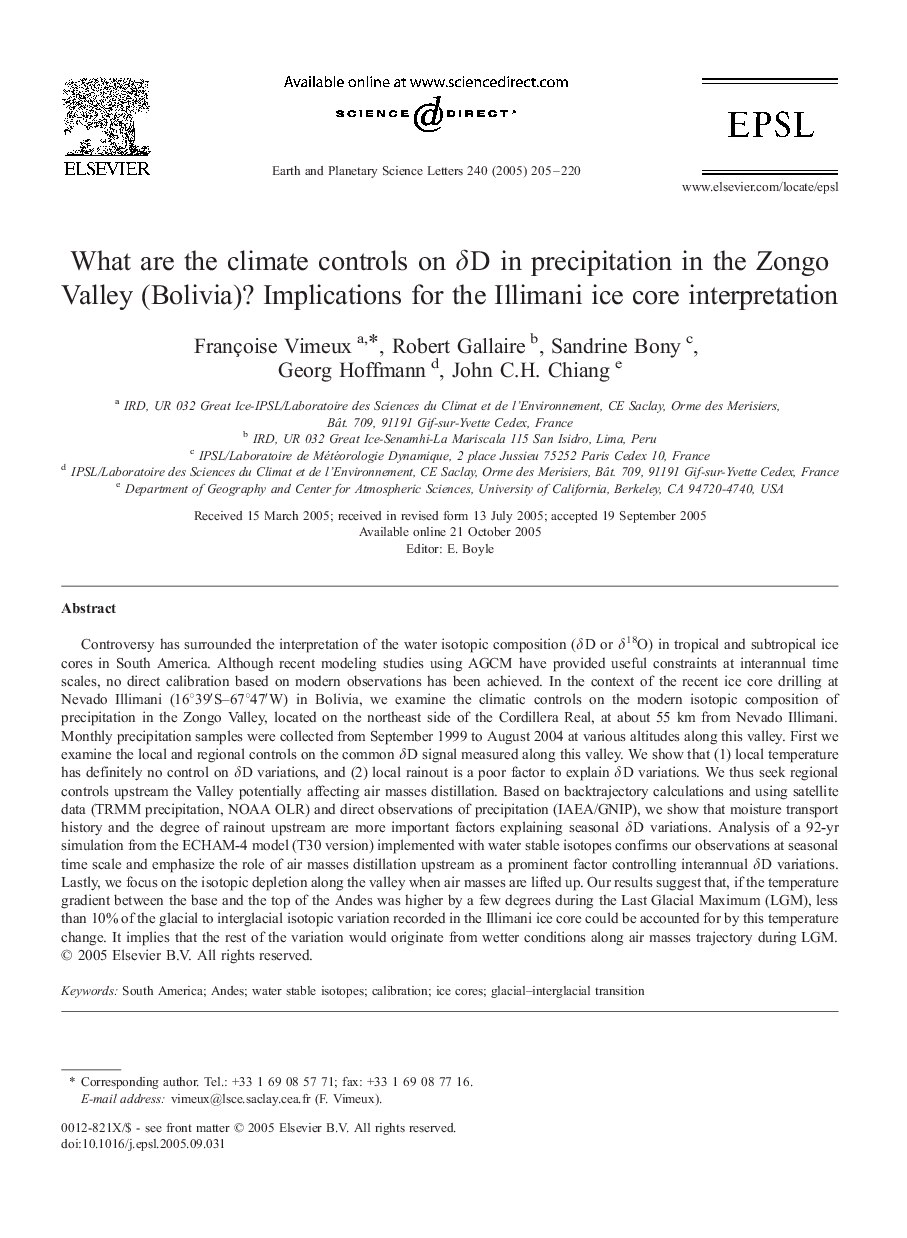| Article ID | Journal | Published Year | Pages | File Type |
|---|---|---|---|---|
| 9522231 | Earth and Planetary Science Letters | 2005 | 16 Pages |
Abstract
Controversy has surrounded the interpretation of the water isotopic composition (δD or δ18O) in tropical and subtropical ice cores in South America. Although recent modeling studies using AGCM have provided useful constraints at interannual time scales, no direct calibration based on modern observations has been achieved. In the context of the recent ice core drilling at Nevado Illimani (16°39â²S-67°47â²W) in Bolivia, we examine the climatic controls on the modern isotopic composition of precipitation in the Zongo Valley, located on the northeast side of the Cordillera Real, at about 55 km from Nevado Illimani. Monthly precipitation samples were collected from September 1999 to August 2004 at various altitudes along this valley. First we examine the local and regional controls on the common δD signal measured along this valley. We show that (1) local temperature has definitely no control on δD variations, and (2) local rainout is a poor factor to explain δD variations. We thus seek regional controls upstream the Valley potentially affecting air masses distillation. Based on backtrajectory calculations and using satellite data (TRMM precipitation, NOAA OLR) and direct observations of precipitation (IAEA/GNIP), we show that moisture transport history and the degree of rainout upstream are more important factors explaining seasonal δD variations. Analysis of a 92-yr simulation from the ECHAM-4 model (T30 version) implemented with water stable isotopes confirms our observations at seasonal time scale and emphasize the role of air masses distillation upstream as a prominent factor controlling interannual δD variations. Lastly, we focus on the isotopic depletion along the valley when air masses are lifted up. Our results suggest that, if the temperature gradient between the base and the top of the Andes was higher by a few degrees during the Last Glacial Maximum (LGM), less than 10% of the glacial to interglacial isotopic variation recorded in the Illimani ice core could be accounted for by this temperature change. It implies that the rest of the variation would originate from wetter conditions along air masses trajectory during LGM.
Related Topics
Physical Sciences and Engineering
Earth and Planetary Sciences
Earth and Planetary Sciences (General)
Authors
Françoise Vimeux, Robert Gallaire, Sandrine Bony, Georg Hoffmann, John C.H. Chiang,
